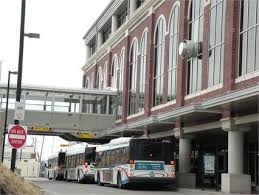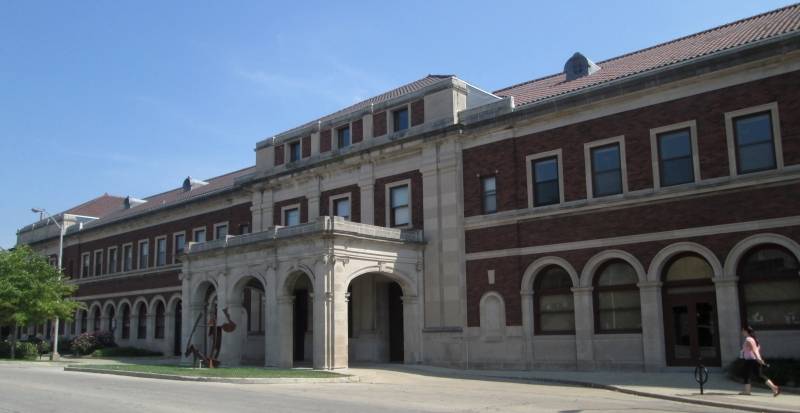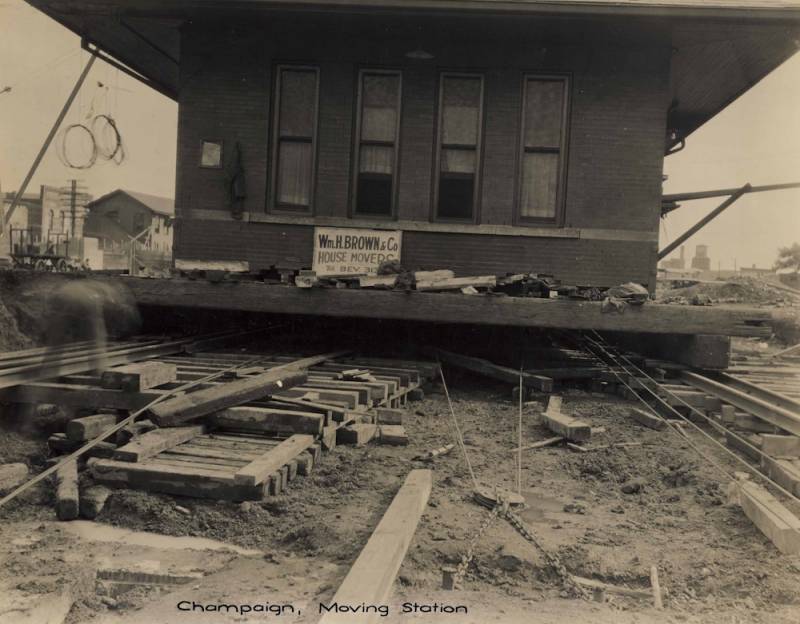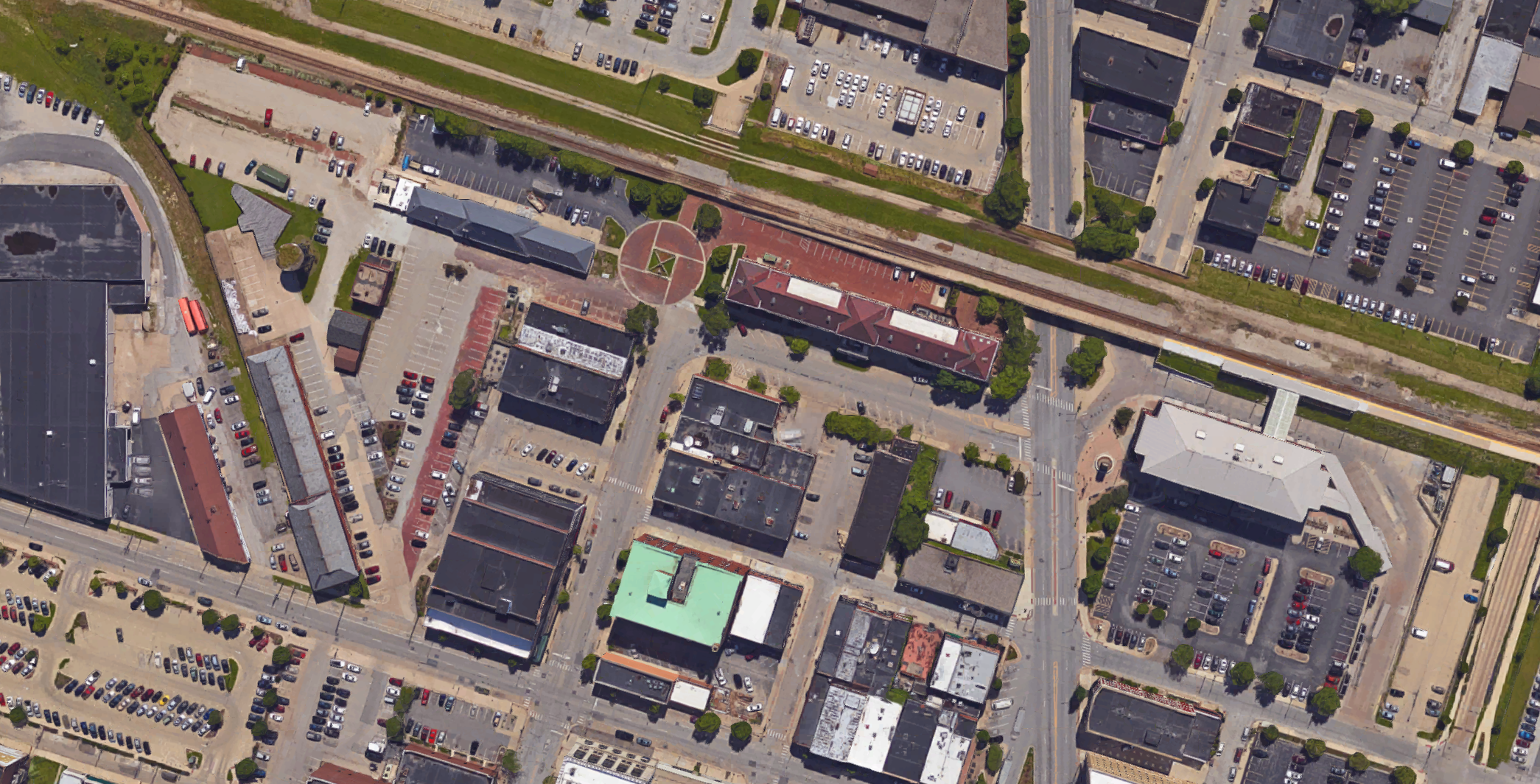Champaign-Urbana residents correctly credit much of the twin cities’ growth to the prominence of the University of Illinois. Many students surely believe a university was constructed in the middle of a cornfield, and two cities happened to grow around it. However, even before there was a university in the area, there was an Urbana followed by a Champaign, and our beloved C-U owes its origins to the mighty railroad. Urbana developed first, becoming a city 1833. But when it came time to construct a major Chicago-New Orleans railroad, it was cheaper for Illinois Central (now part of Canadian National) to build tracks two miles west of Urbana and sell undervalued farmland, and they completed a line removed from Urbana in 1854, marketing Champaign as “West Urbana,” until it took on the name Champaign when it was incorporated as a city in 1860.
 As Champaign developed into the regional transit hub along the rail, it too gained multiple train stations, all in close proximity to one another. The current terminal serving Amtrak, MTD, and intercity buses is Illinois Terminal, built in 1999 for $7 million. It was born of the need to provide a multi-modal hub for Champaign-Urbana, a first for the region. It also houses government offices and a meeting space. At that time, it didn’t make sense for Amtrak, MTD, and bus companies to pay for their own facilities, and it created many inefficiencies in the system.
As Champaign developed into the regional transit hub along the rail, it too gained multiple train stations, all in close proximity to one another. The current terminal serving Amtrak, MTD, and intercity buses is Illinois Terminal, built in 1999 for $7 million. It was born of the need to provide a multi-modal hub for Champaign-Urbana, a first for the region. It also houses government offices and a meeting space. At that time, it didn’t make sense for Amtrak, MTD, and bus companies to pay for their own facilities, and it created many inefficiencies in the system.

Prior to the short move to a centralized facility, trains stopped just across University Avenue at an ornate, two-story 1920’s era station referred to as the Illinois Central Passenger Terminal at 116 N. Chestnut, which was constructed when the main line railroad tracks became elevated through Downtown Champaign in 1924. Since Amtrak’s vacation of the facility, it has been converted into charming and unique retail and office space, featuring businesses like Exile on Main Street and Maize. The platform remains as well.

Predating that is the oldest remnant of Champaign’s railroad past, just north of this building across Main Street and now home of the Champaign location of Black Dog. The long depot was built in 1899 after the Doane House (Champaign’s rail shack built in 1854) burned down. It wasn’t much, and likely less than what the city’s civic leaders expected, but it proved to be a useful and fitting station for passengers thundering down the Chicago to New Orleans tracks. Once occupying the space of its successor station, it was moved north to be integrated into the freight yard in the early 1920’s, as a single story passenger depot caused serious logistical problems with elevated tracks. The head house was placed on rails of its own and slowly moved north to its current location, functioning as a station the whole time. Following its move it was integrated into the freight facility, which included the freight building on Walnut (currently for sale) and, at one point, Illinois Central-owned greenhouses which produced fresh fruits and vegetables on their luxury trains.
Don’t worry, Urbana, I didn’t forget about you.

Urbana also has its own downtown depot, which was built in 1922 by the “Big Four” and operated until termination of train service in 1957. It was converted to the current-day Station Theater in the 1970’s, and it never reached the prominence of Champaign’s depots. It was built for a small Danville to Pekin line (opening in 1866 by the Indiana, Bloomington & Western Railroad, subsequently becoming the “Big Four”) and though it helped Urbana receive freight and connect to the larger rail system, it never handled the volume of trains that the Illinois Central tracks did. Plans exist to convert the rail line to a multi-use path, which currently only services one weekly freight train to-and-from the Solo Cup factory.
As Urbana remains on track to gain a new food hall near its former station, and Champaign reveals plans for a mega-redevelopment and expansion near Illinois Terminal, the region continues to build, rebuild, and densify around its current and former rail hubs and, I presume, that’s exactly what Illinois Central would have wanted to see.








